Is Gatorade Good for You? Uses, Benefits and Downsides for Cyclists

Gatorade is the world’s largest sports drink manufacturer, with a share of almost half the global sports drink industry.
Gatorade has an extensive range of hydration and energy drinks, powders, and supplements to enhance sports performance. In addition, the traditional Thirst Quencher formula remains extremely popular for sport and general enjoyment.
This article will describe the different types of sports drinks, answer the question “is Gatorade good for you?”, explain the different ways to use it, and finish with a recipe to make your own at home.
Does Gatorade Give You Energy for Cycling?
Yes, Gatorade does give you energy for cycling. However, it’s not necessary for most casual cyclists most of the time. When energy expenditure is high for an extended period of time (two hours or more), a sports drink like Gatorade can help improve performance and prevent dehydration by replacing carbohydrates, fluids, and electrolytes.
Isotonic, Hypertonic, and Hypotonic
You’ll often see the words iso, hyper, and hypotonic bandied about when talking about sports drinks. So let’s look at each one in more detail to better understand how the different drinks work and when you should use them.
‘Tonicity’ refers to the concentration of fluid, sugars, and electrolytes compared to blood. The tonicity of a drink impacts how quickly it is absorbed into the bloodstream for your body to use.
Before liquids can pass from your gut into your bloodstream and be transported around the body for utilization, the concentrations must balance, impacting the speed of availability.
Isotonic — Gatorade, Powerade, Lucozade Sport
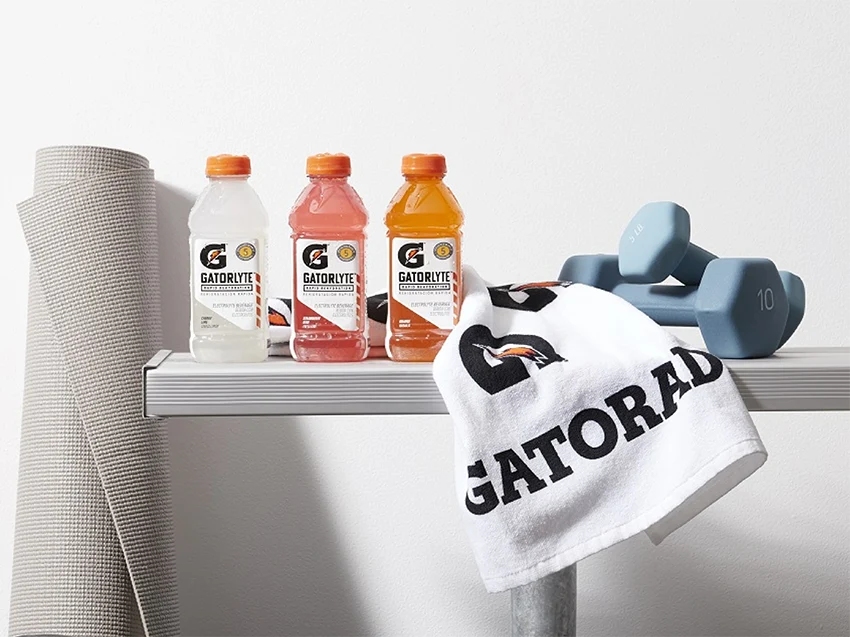
Isotonic drinks contain a similar concentration to blood, containing six to eight percent carbohydrates (30-40g per 500 ml).
These drinks deliver a moderate amount of energy and are absorbed into the bloodstream relatively quickly, although slightly slower than hypotonic drinks, which are the fastest. Unfortunately, many drinks labeled isotonic are actually hypertonic, which can cause GI distress if consumed when exercising.
When to use isotonic?
Isotonic drinks are valuable for medium-duration, high-intensity exercise when carb intake is prioritized over hydration. However, many athletes water down isotonic sports drinks to create a hypotonic, fast-hydration beverage.
Hypotonic — Electrolyte solutions, Gatorade Zero, Gatorade Fit, Powerade Zero
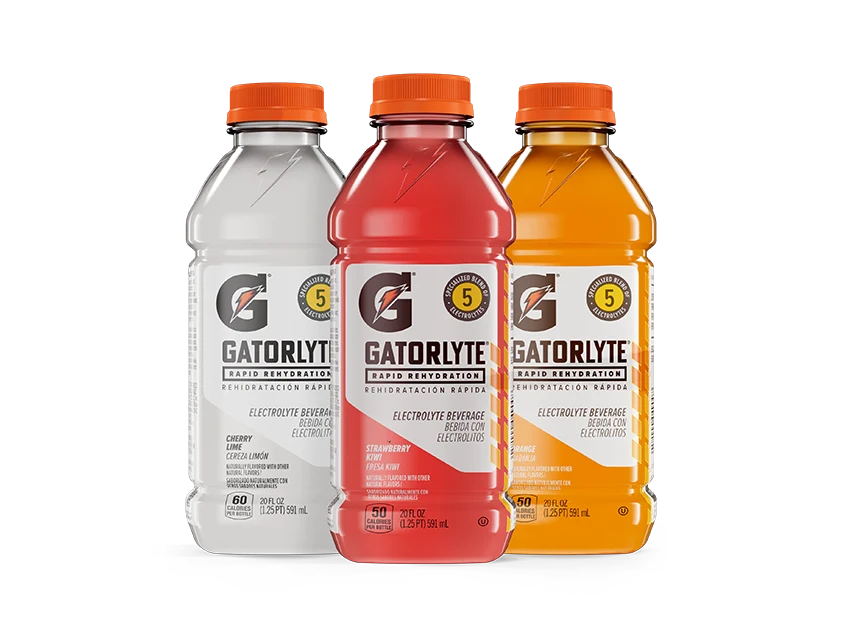
Hypotonic drinks have a lower concentration than blood, meaning they contain less than six percent carbs (less than 30g per 500 ml).
These drinks can quickly be absorbed into the bloodstream when they reach the gut because their concentration is lower, allowing them to pass through the gut membrane immediately. Hypotonic sports drinks often have electrolytes to replace what you lose through sweat.
When to use hypotonic?
Best for rapid hydration before and during exercise and should be used whenever hydration is your main priority, such as when riding in hot weather.
Hypertonic — Hydrogels, Recovery drinks

Hypertonic drinks have a higher concentration than blood, typically over ten percent carbohydrates (50-80g per 500 ml).
When a hypertonic solution you ingested reaches your gut, your body must first draw water out of the bloodstream to balance the concentration of the fluid you ingested to that of your blood. Only then can it start absorbing what you drank.
This process of drawing water out of your bloodstream actually dehydrates you but is effective for processing a large number of calories in a short period.
When to use hypertonic?
Hypertonic drinks are best for ingesting carbohydrates after a workout for recovery, pre-workout for fueling, or during long-duration exercise when you are not worried about hydration but want to refuel. Protein is an important component in hypertonic drinks for recovery.
Gatorade Nutritional Information
The original Gatorade Thirst Quencher is typical for isotonic sports drinks, with eight percent carbs, putting it at the high end of the isotonic range.
Gatorade produces various unique sports drinks with differing sugar and electrolyte content to serve specific functions, such as Gatorade Zero, Gatorade Fit, and Gatorlyte.
A standard Gatorade bottle has five ingredient categories: fluid, fuel, electrolytes, flavor/coloring agents, and stabilizers.
- Fluid – Water
- Fuel – Sugar, dextrose
- Electrolytes – Salt, Monopotassium phosphate
- Flavor/coloring – Citric acid, sodium citrate, natural flavor, caramel color
- Stabilizers – Modified food starch, glycerol ester
The following table shows the nutritional value of a 12 oz serving and a 24 oz serving. Percentages reflect a 2000-calorie per day diet.
|
Per Serving
|
Per Container
|
|
| Calories | 80 | 190 |
| Total Fat |
0g
|
0g
|
| Sodium |
160mg
7%
|
380mg
17%
|
| Total Carb. |
22g
8%
|
51g
18%
|
| Total Sugars | 21g | 48g |
| Incl. Added Sugars |
21g
41%
|
48g
96%
|
| Protein |
0g
|
0g
|
| Potassium |
50mg
0%
|
110mg
2%
|
Is Gatorade Good for You?
The short answer to the question, ‘is Gatorade good for you?’ is no. Gatorade doesn’t have any nutritional value that contributes to general health, as its main components are water and sugar.
Downsides of Drinking Gatorade
Epidemiological studies such as the 2012 paper by Malik and Hu highlighted sugar-sweetened beverages (SSB) intake as a significant contributor to weight gain, which increases the risk for type 2 diabetes and cardiovascular disease. In addition, the study concluded that these drinks might negatively impact health independent of weight gain by increasing inflammation.
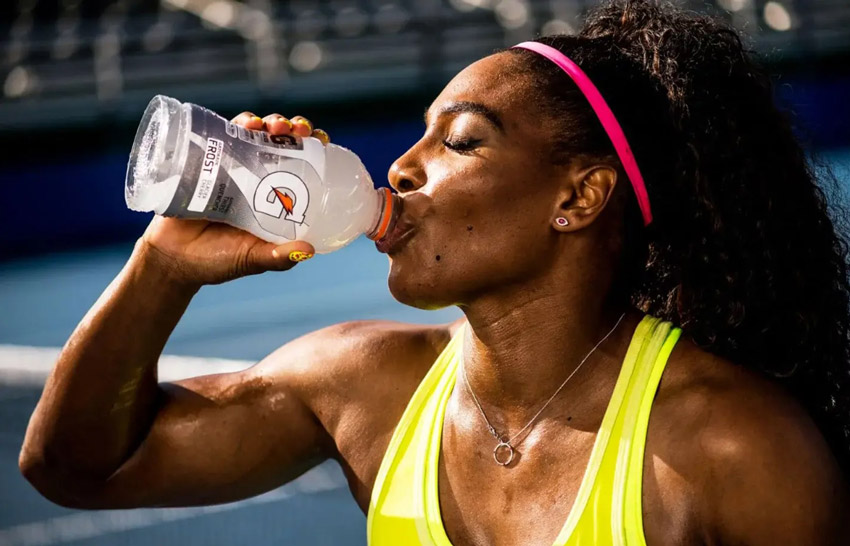
Another paper published in 2014 draws attention to the rise in SSB consumption and a corresponding increase in obesity across the population, although this may not be causal.
Consuming sugar-sweetened beverages (SSB) makes it much easier to over-consume calories.
Regardless of whether the consumption of SSB leads to weight gain or negatively affects health independent of weight gain, the issue remains that, when consumed, these drinks contribute significantly to daily calorie intake without any accompanying nutrition.
Therefore, the overall healthfulness of a diet is reduced when the calories from minimally processed foods (which carry other vitamins and minerals) are replaced with SSB, even if you don’t exceed your daily calorie needs.
Dental Issues
Consumption of sugar-sweetened beverages is also a risk factor for dental issues. There is likely a dose-response relationship, meaning the more SSB you drink, the more the risk of dental problems, as a 2014 study in the Journal of Dentistry reported.
Is Gatorade Zero Good for You?
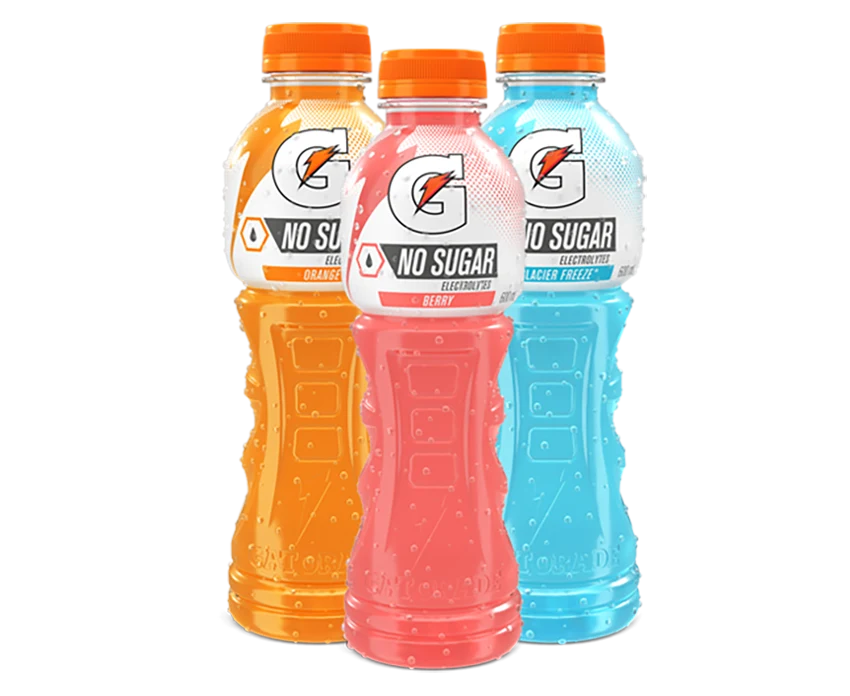
Like SSB, non-caloric sports drinks are not good for you per se. However, they are a solid replacement for SSB consumption for those who enjoy the taste of these drinks and want to continue drinking them for pleasure without the extra calories. In addition, non-caloric or low-calorie sports drinks like zero Gatorade, G2, or Powerade Zero can be used as hypotonic hydration beverages for sports.
Is Gatorade good for you when sick?
No, Gatorade is not good for you when sick. However, zero-sugar Gatorade can replenish electrolytes lost from vomiting or diarrhea without overloading your body with sugar. Ideally, you would use a pharmaceutical electrolyte formula such as Pedialyte or Electrolit, as these contain higher percentages of electrolytes and minimal sugar.
Gatorade and Sports Drinks for Cycling
When you exercise, your body breaks down fat and the body’s stores of glycogen (the stored form of carbohydrates) in your liver and muscles, along with the glycogen circulating in your blood for energy. The higher the intensity, the higher the percentage of glycogen used as total energy expenditure.
For this reason, consuming energy during long bouts of exercise—especially at a high intensity—is essential to avoid ‘bonking’ (draining your glycogen stores).
Nonetheless, the question of whether or not you need a sports drink like Gatorade when you exercise is complicated. In most cases, it isn’t necessary, but a few situations may justify using sports drinks.
- Long-duration ride or event, such as a century ride or a randonneuring event.
- High intensity for moderate to long duration
- High temperature and humidity
Examples of When to Use Hypotonic and Isotonic Sports Drinks
Let’s take a simplified example: a two-hour ride at 85% of max heart rate (MHR) on a warm and humid summer afternoon. In this situation, energy expenditure will be high, and the rider will lose more fluids and electrolytes through sweat than usual.
As a result, you will want to take in fluids and energy during the ride. However, hydration is a priority over energy intake, as the ride probably isn’t long enough for you to bonk completely at that effort if adequately fueled pre-exercise. Therefore, consuming a hypotonic electrolyte-enhanced beverage in the second hour will benefit performance, such as Gatorade’s Gatorlyte, zero-sugar Gatorade, or a diluted Thirst Quencher.
Take another example: a ride at 75% of MHR for four hours on a cold autumnal morning. In this situation, the rider will have a moderate energy expenditure over a long duration and a slightly reduced sweat rate.
While fluid and electrolyte replacement is still important, you may prioritize energy intake midway through the ride by drinking an isotonic energy drink like Gatorade or Powerade while continuing to drink water throughout the ride.
Sports Drinks for Casual Cycling, Competitive Cycling, or for a Treat
In the two examples above, the rider is expending a significant amount of energy through high-intensity or long-duration rides. These two examples could relate to a casual cyclist or be part of a competitive cyclist’s training plan.
Most casual cyclists or exercisers do not maintain such high intensities or ride for long enough durations that justify consuming sports drinks like Gatorade. As a result, water is adequate for hydration most of the time.
On the other hand, sports drinks can be an effective way to take in energy during a ride if you are a competitive cyclist or train hard as a casual cyclist. However, there are more specialized formulas than Gatorade that may perform better.
Many people drink Gatorade and other sports drinks because they like the taste, which is a valid reason when done from time to time. If you compensate by reducing calories elsewhere or increasing calorie expenditure by moving more throughout the day, drinking the occasional sports drink, say one or two per week, will not increase body weight.
Gatorade vs. Powerade
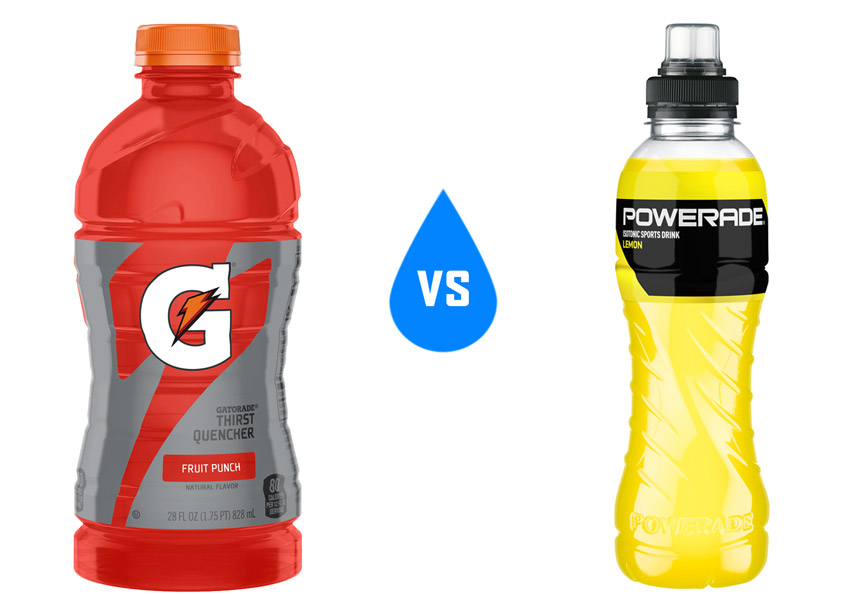
Powerade and Gatorade are the same in terms of their impact on sports performance. Each drink has identical amounts of sugar and comparable electrolyte concentrations, which are the ingredients of importance for exercise.
The following table shows a Gatorade vs. Powerade comparison of two 12 oz servings.
| Powerade | Gatorade | |
| Calories | 80 | 80 |
| Carbs | 21 grams | 22 grams |
| Protein | 0 grams | 0 grams |
| Fat | 0 grams | 0 grams |
| Sugar | 21 grams | 21 grams |
| Sodium | 150mg | 160mg |
| Potassium | 50mg | 50mg |
| Magnesium | 0% of DV | – |
| Niacin | 20% of DV | – |
| Vitamin B6 | 20% of DV | – |
| Vitamin B12 | 35% of DV | – |
You’ll note that the main difference is Gatorade’s slightly higher sodium and potassium concentration, whereas Powerade adds Magnesium, Niacin, and Vitamins B6 and B12.
Homemade Gatorade Recipe
Making a homemade Gatorade is an easy alternative to purchasing a sports drink. Doing so allows you to create your own unique flavors, add natural ingredients, use more electrolytes, and control the tonicity of the drink (isotonic, hypotonic, hypertonic) for different purposes.
:max_bytes(150000):strip_icc():format(webp)/image-370-ce4cefe7e8454c0a9def5a14ed03ac53.jpg)
One popular recipe of AllRecipes’ is a hypotonic hydration-focused homemade Gatorade variation. You can tweak it to make it isotonic by increasing the sugar content. This recipe makes just over nine cups (nine 8 oz servings).
Ingredients needed:
- 8 cups of water
- 3 tablespoons of honey or sugar (hypotonic) / 4.5 tablespoons (isotonic)
- 1/2 teaspoon of sea salt
- 1/4 teaspoon of a half salt/half potassium product such as Windsor Half Salt (optional)
- 3/4 teaspoon of calcium/magnesium powder (optional)
- Pinch of cayenne pepper powder
- 3/4 cup of fresh orange juice
- Juice of 2 medium lemons
- Juice of 2 medium limes
To make:
- Add one cup of water to a pot
- Add honey, salt, calcium-magnesium powder, and cayenne
- Whisk ingredients over low heat until dissolved
- Remove from heat and allow to cool
- Add juices to room temperature liquid and whisk
- Add the remaining 7 cups of water and whisk until blended



